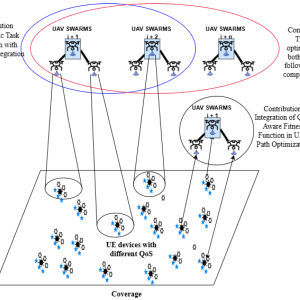In the ever-evolving landscape of global technology and information systems, staying ahead of the curve is imperative. As we delve into the intricacies of China’s ambitious plans outlined in the 14th Five-Year Plan for National Informatization, it becomes evident that a comprehensive understanding of these initiatives is crucial for anyone navigating the digital terrain.

China’s Vision for 14th Five-Year Plan for National Informatization
China’s 14th Five-Year Plan, unveiled in December 2021, lays the foundation for a strategic approach to national informatization. The plan encompasses a multitude of initiatives aimed at leveraging technological advancements for the nation’s overall development. In this article, we will dissect key components of the plan, shedding light on the intricate details that define China’s vision for the future.
Strategic Objectives: Navigating the Digital Future
- Cybersecurity and Information Assurance China’s 14th Five-Year Plan places a significant emphasis on fortifying its cybersecurity framework. The nation is gearing up to enhance its capabilities to safeguard critical information infrastructure. As businesses and governments worldwide grapple with the escalating threat landscape, China’s strategic focus on cybersecurity aligns with global imperatives for a secure digital environment.
- Emerging Technologies: Embracing the Digital Revolution Embracing emerging technologies is at the core of China’s strategy. The plan underscores the importance of advancements in areas such as artificial intelligence (AI), 5G technology, and big data analytics. By strategically positioning itself at the forefront of these technological frontiers, China aims to solidify its status as a global technology powerhouse.
Implications for the Defence and Aerospace Industry
- Military Modernization: A Digital Frontier The 14th Five-Year Plan articulates China’s commitment to modernizing its military capabilities through the infusion of cutting-edge technologies. From the integration of AI in military operations to the development of advanced cyber warfare capabilities, the plan signals a paradigm shift in the way nations approach defence strategies.
- Aerospace Advancements: Navigating the Technological Skyline In the aerospace sector, the plan envisions a robust integration of digital technologies. From satellite communications to the development of next-generation aircraft, China’s aerospace ambitions are poised to redefine the industry landscape. As satellite constellations become integral to global communication networks, China’s strategic investments in this domain are poised to make a substantial impact.
Global Competitiveness: A Balancing Act
- International Collaboration: Forging Digital Alliances China’s commitment to international collaboration in the realm of informatization is a notable aspect of the plan. By fostering global partnerships and collaborations, China aims to contribute to the development of international standards, fostering an environment where nations can collectively harness the benefits of digital transformation.
- Economic Impacts: Navigating the Digital Economy The 14th Five-Year Plan recognizes the symbiotic relationship between national informatization and economic growth. By fostering a conducive environment for digital innovation and entrepreneurship, China positions itself to lead in the digital economy. The implications for businesses and industries are profound, as the digital landscape becomes a key driver of economic success.
Conclusion: Layers of China’s 14th Five-Year Plan
As we unravel the layers of China’s 14th Five-Year Plan for National Informatization, it becomes clear that the nation is poised to make significant strides in the digital realm. From bolstering cybersecurity measures to spearheading advancements in emerging technologies, China’s vision extends far beyond its borders. For those in the defence and aerospace industry, understanding and adapting to these seismic shifts is not just a necessity but a strategic imperative.
In conclusion, the 14th Five-Year Plan serves as a roadmap, guiding China towards a future where informatization is not just a tool but a cornerstone of national development. The intricate details embedded in the plan underscore China’s commitment to shaping the digital landscape, and for industries worldwide, it is a clarion call to adapt, innovate, and navigate the digital horizon with unwavering precision.











